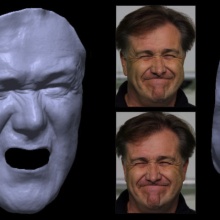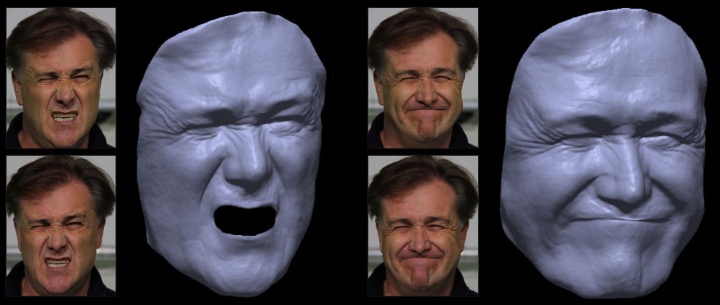Driver assistance systems that recognise obstacles in road traffic, visual effects in films like Matrix, computer-animated characters and combined imaging processes in medicine: behind all these technologies lies a process that information researchers have been constantly working on improving for years, the so-called optical flow. Prof. Andrés Bruhn from the Institute of Visualisation and Interactive Systems at the University of Stuttgart is a specialist in this field. At the “European Conference on Computer Vision“ in Zürich recently he was awarded the “Jan Koenderink Prize for Fundamental Contributions in Computer Vision“ jointly with colleagues for a method developed ten years ago. This is one of the most renowned prizes in the field of machine vision and honours works that have proven particularly valuable after a decade.
How can computers be put in a position to recognise movements in a video as accurately as possible? This question has been occupying computer science researchers for around 30 years. Since receiving his doctorate Prof. Andrés Bruhn has been dealing with the optical flow in order to accelerate the machine vision of video images and to improve them in terms of quality. But what exactly is an optical flow? Broadly speaking what lies behind the method is an algorithm that observes each pixel of an individual video image and estimates its movement with regard to its reference image.
Numerous technologies can be realised using this principle. For example real non-existent intermediate images can be created in order to generate slow motion effects without loss of quality in the film industry or create computer-generated film sequences from video recordings. The face of an actor can be reconstructed in this way with realistic facial expressions and gestures and then be replaced by a virtual character. Also applications in the automotive field are based on the calculation of flow fields. In this respect there are driver assistance systems that recognise distances to obstacles based on camera recordings, identify moving objects, predict collisions or make other statements on the traffic situation. Another sector of the economy in which the optical flow is used is medical image processing. For example recordings of different imaging processes are superimposed there to be able to investigate the growth of a tumour in more concrete terms, for instance.
“The available optical flow methods have proved their worth in many applications“, said Prof. Andrés Bruhn, “but still they are subject to a great number of restrictions. To minimise these further and to develop further fields of application is the objective of our work.“ His research team particularly deal with the utilisation of recordings with bad lighting or rapid movement or colour changes but also the concrete estimate of object arrangements in a room and the basic improvement of reconstructed computer models are the focus of their work.
This year Andrés Bruhn was awarded the Koenderink Prize for a method he had already developed with his colleagues Thomas Brox, Nils Papenberg and Joachim Weickert in 2004 whilst doing his doctorate at the University of Saarland. At the time the research team succeeded in greatly increasing the accuracy compared to methods already available. The award is one of the most renowned prizes in the field of machine vision and honours works that have particularly proven their worth after a decade. Since its publication the work has been quoted over 1,200 times, clearly showing the special value of the work for science.
You can find the specialist article at
http://link.springer.com/chapter/10.1007%2F978-3-540-24673-2_3.
Further information:
Tina Barthelmes, University of Stuttgart, Visualisation Institute (VISUS), Tel. 0711/685-88604,Email: tina.barthelmes (at) visus.uni-stuttgart.de
Prof. Andrés Bruhn, Institute of Visualisation and Interactive Systems, Tel.: 0711/685-88439,
Email: andres.bruhn (at) vis.uni-stuttgart.de
Birgit Vennemann, University of Stuttgart, Department of University Communication, Tel.
0711/685-82122,
Email: birgit.vennemann (at) hkom.uni-stuttgart.de



